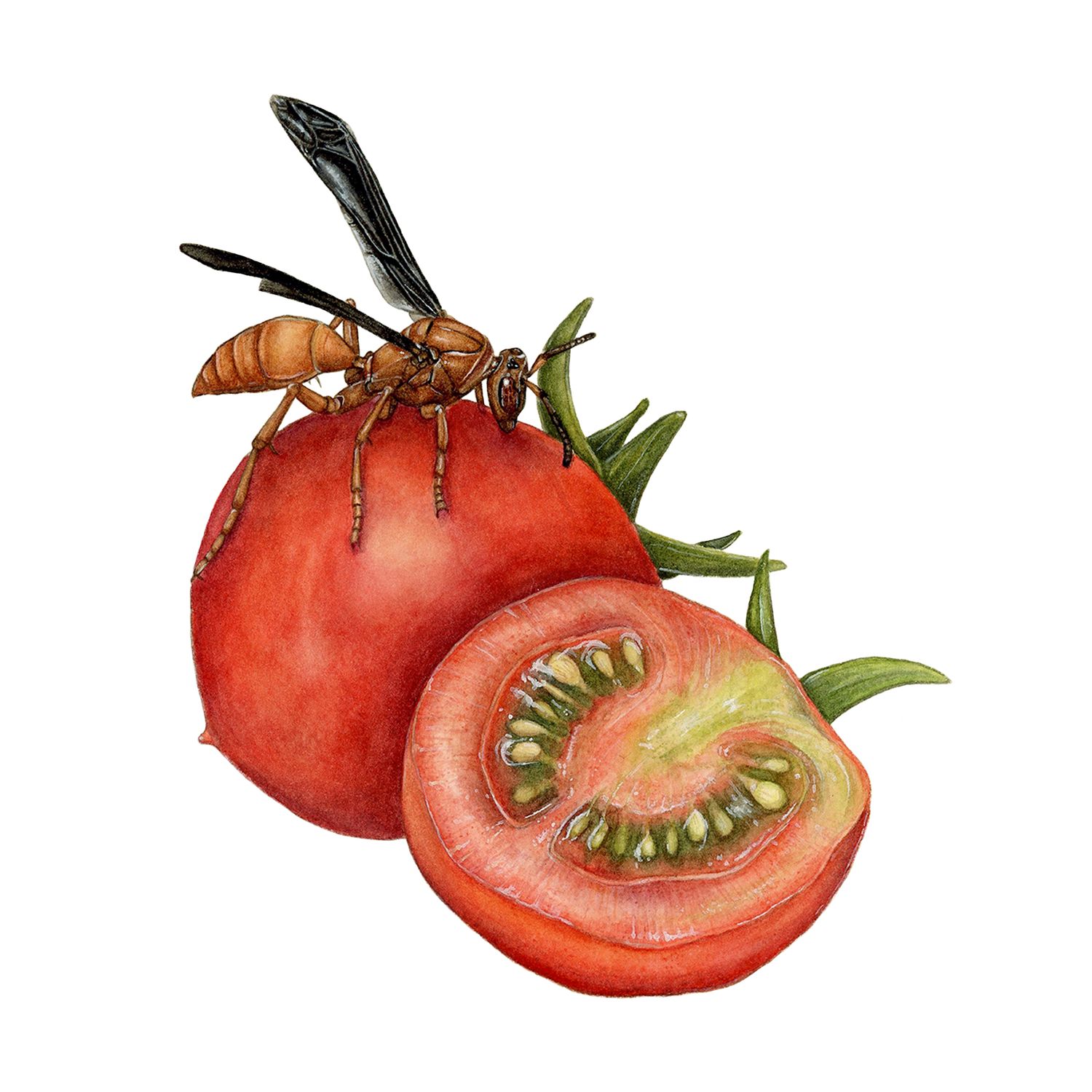
"Nesta the Red Paper Wasp"
Mat Size: 8"x8"
Image Size: 6"x6"
This is a hand signed matted 8"x8" print of an original watercolor painting titled "Nesta the Red Paper Wasp". Each image is printed with archival inks on watercolor paper stock for a long lasting print resistant to fading. For every print sold, I will be donating 10% of the profit to wildlife rehab facilities, organizations & sanctuaries.
The Story Behind the Painting: Every year I create a new tomato painting for an art festival held in East Nashville called Tomato Art Fest. For my 2024 painting, I had the idea to set a tomato on a rock in my pollinator watering station and hope that a red paper wasp would land on the tomato so I could capture the perfect reference photo. After waiting for almost an hour in 100 degree heat, I finally got my chance.
Nesta the red paper wasp was one of many wasp friends that visited my pollinator watering station over the summer. I filled it with fresh water daily while wasps would fly excitedly around me, eager to take a drink. I felt like these wasps grew comfortable with me while I sat next to the watering station and watched them. I wished in those moments that people could see wasps through my eyes, that they are just little souls trying to exist on this planet like you and me. I do understand the fear behind them, as their stings can be quite painful, but their aggression is often misunderstood. Red paper wasps only sting when they feel threatened or you are too close to their nest. I promise it isn’t because they dislike humans.
Red paper wasps (polistes carolina) are social creatures and native to the eastern United States. These types of wasps prefer nesting in protected areas such as tree cavities, but they also construct nests on manmade structures like the undersides of roofs, bridges, chimneys, etc.
Their nests are beautifully crafted and actually made by the wasp chewing plant and wood fibers mixed with their saliva to create a paper-like material. Their nests often resemble an upside down umbrella with exposed cells that look like honeycomb. Due to the fact that wasps feed their larvae other insects, they are incredible at “pest control” within our ecosystem. Wasps require the nectar from flowers for their own energy, which means that they also become “accidental pollinators”. They don’t pollinate as well as bees because they lack hair on their bodies, but they do still contribute to the pollination of plants which is so important for our ecosystem.



